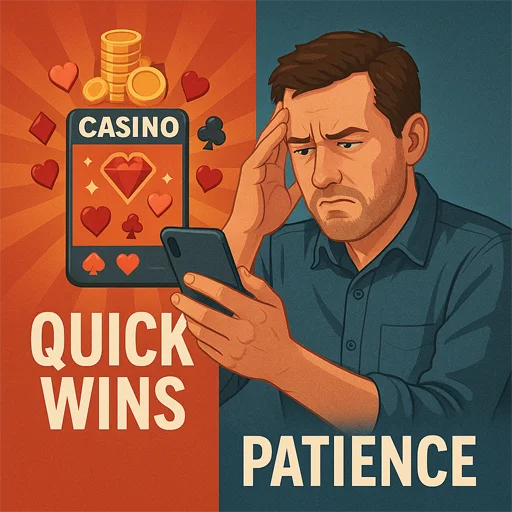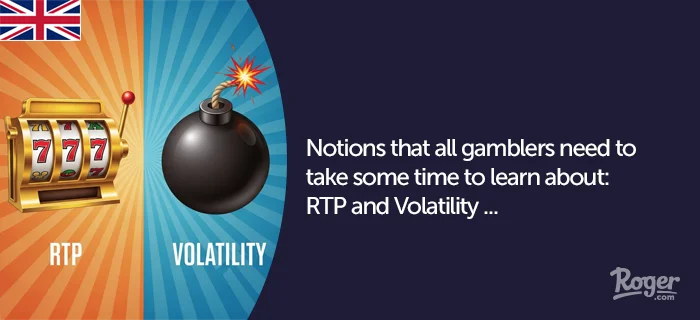Slot machine games have evolved exponentially in popularity throughout the golden era of online casinos that we are presently living.
With millions of players from all over the world, many of whom are slots purists, these players tend to take their sessions very seriously. Consequently, a lot of them take the time to learn about the mechanisms behind these types of games.
Table of contents
The strategy behind slot game RTP and volatility
Although the central basis of slot games is based on randomness and fairness, there is a tremendous amount of strategic thinking that goes into creating these games.
Today, slot machines exist in an incredible variety of types and sophistication levels with two very important notions embedded in every slot game. Notions that all gamblers need to take some time to learn about: RTP and Volatility.
These might look alike at first glance, but these terminologies operate quite differently. This is why they are important when selecting a game that appeals to your taste and style of play.
Why RTP still matters for long-term play
Premium online casino platforms with consistently strong RTP (Return-to-Player) rates continue to attract players seeking better long-term value. According to gambling expert Matt Bastock, these top-tier platforms often feature games that are designed to return a larger share of wagered money back to the player over time.
? For players who log in and spin regularly, this can lead to a noticeable difference in outcomes. Even small gains accrued steadily across extended sessions can build up substantially over time.
These platforms also tend to provide other appealing benefits—such as fast withdrawals, mobile compatibility, and enticing in-game features—all of which help keep users engaged.
Among the main draws, however, are high-RTP games, especially for players who understand how to interpret those numbers.
The RTP score refers to the Return-to-Player percentage built into each slot game. Every slot, regardless of theme or format, has an RTP figure coded into its mechanics. The higher the RTP, the more frequently the game is intended to pay out over a large volume of plays.
Example: a slot game with an RTP of 96% theoretically returns £96 for every £100 wagered, over time. The amount and frequency of individual wins, however, remain completely random.
So while short-term outcomes can vary widely, a high RTP generally offers more consistent returns across the long run. That kind of predictability makes it much easier for players to plan their bankrolls and avoid sudden surprises.
Players who prioritise RTP scores over flashy features tend to overlook things like animated graphics, cascading reels, and bonus mechanics. For them, what matters most is knowing which games offer the most favourable RTP scores for their strategies and playing preferences.
Understanding volatility: risk vs. reward
Volatility defines how much variance there is in a slot’s payout pattern and is part of what makes the coding for modern slot machines so complex. It’s part of what makes modern slot design so intricate. Volatility is what dictates the frequency and size of your potential wins.
Low-volatility games provide smaller but more consistent wins. These are best suited to players who enjoy steady play with little risk. High-volatility slots pay out less frequently, but when they do, the prize can be huge.
For tight-budgeted players, high volatility is a gamble—a few losing runs can burn through cash in no time. But for that, the payoff is.one large win could easily balance the books ?
The decision to play high or low volatility depends on your risk appetite. There are those who prefer long sessions with incremental rewards, and there are also those who get the thrill of going after a large win with the accompanying prolonged dry periods.
If you're not sure where you're at, it's well worth trying out a range of games in demo mode first before spending actual money. As time passes, you'll get a sense of how different volatility levels pan out and what ones are appropriate for your comfort zone.
Why players misunderstand the two
It’s common for players to mistakenly believe that a high RTP means frequent payouts. But that’s not always the case. A slot game can have an RTP of 97% and still be highly volatile.
This means that over thousands of spins, you may receive an average return of 97p for every £1 staked, but that average could result from one large win and several smaller losses.
Without a proper understanding of volatility (or probability theory), it’s easy for players to misread how a game is performing. Some may even think a game is “broken” if it doesn’t pay out frequently, even though it’s working exactly as it should.
Much of the confusion is due to the way that these measures are reported. RTP tends to be shown as a constant percentage, but volatility ratings aren't always explicitly marked. Some casinos just indicate games as being “low,” “medium,” or “high” volatility, which can be too imprecise to be useful.
To avoid this, players are advised to watch out for their own play, pay attention to payout schemes, and gain individual knowledge of how certain slots play. With time, recognisable patterns will begin to emerge, assisting you in making more informed game selections.
Adapting your bankroll to match game type
Taking advantage of promotions and bonus codes can certainly help stretch your bankroll, but proper fund management depends largely on the type of game you’re playing.
With low-volatility slots, even a small bankroll will stick for a long time. You can play for a longer period, have more stable entertainment, and have a better chance of triggering smaller winnings. With high-volatility slots, you need to adopt a more methodical strategy. You may need a larger bankroll—or a more risk-tolerant attitude—to get through longer periods between wins.
All in all, effective budgeting is not solely dependent on how much money you throw around, but on aligning your bankroll plan with your game's level of volatility. A mismatch here can very easily result in a pleasurable session turning into an infuriating one.
RTP doesn’t predict short-term results
It’s important to keep in mind that RTP is calculated based on millions of spins, which means it reflects a long-term average rather than short-term outcomes. You could hit a jackpot on your first spin, or go through dozens of dry runs before seeing any return.
The same principle applies to volatility. Even a high-volatility game might occasionally offer a string of quick wins. Ultimately, slot outcomes are random in the short term, which makes expectations management essential.

Players who view RTP as a helpful guide tend to make better, more rational choices. Using these figures to inform your decisions is smart. But relying on them to predict your next result? That’s where disappointment can creep in.
? Treat each session as unpredictable, and let any win feel like a welcome surprise rather than a promised return.
Conclusion
RTP and volatility are core components of how slot games are designed. While all slot games aim to be fair and random, they must also be coded to ensure profitability for the casino operator, and it’s these two concepts that shape how often and how much players win.
The key difference is that RTP reflects the long-term average payout, while volatility defines the short-term experience. Neither guarantees any specific outcome, but when understood correctly, both can be valuable tools in shaping your playing strategy.
Smart, observant players use these insights to guide their choices, adapt their bankrolls, and improve their overall experience. By learning how these elements work together, you can select games that align with your style and safeguard your funds against the unpredictability of online slots.





